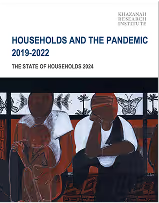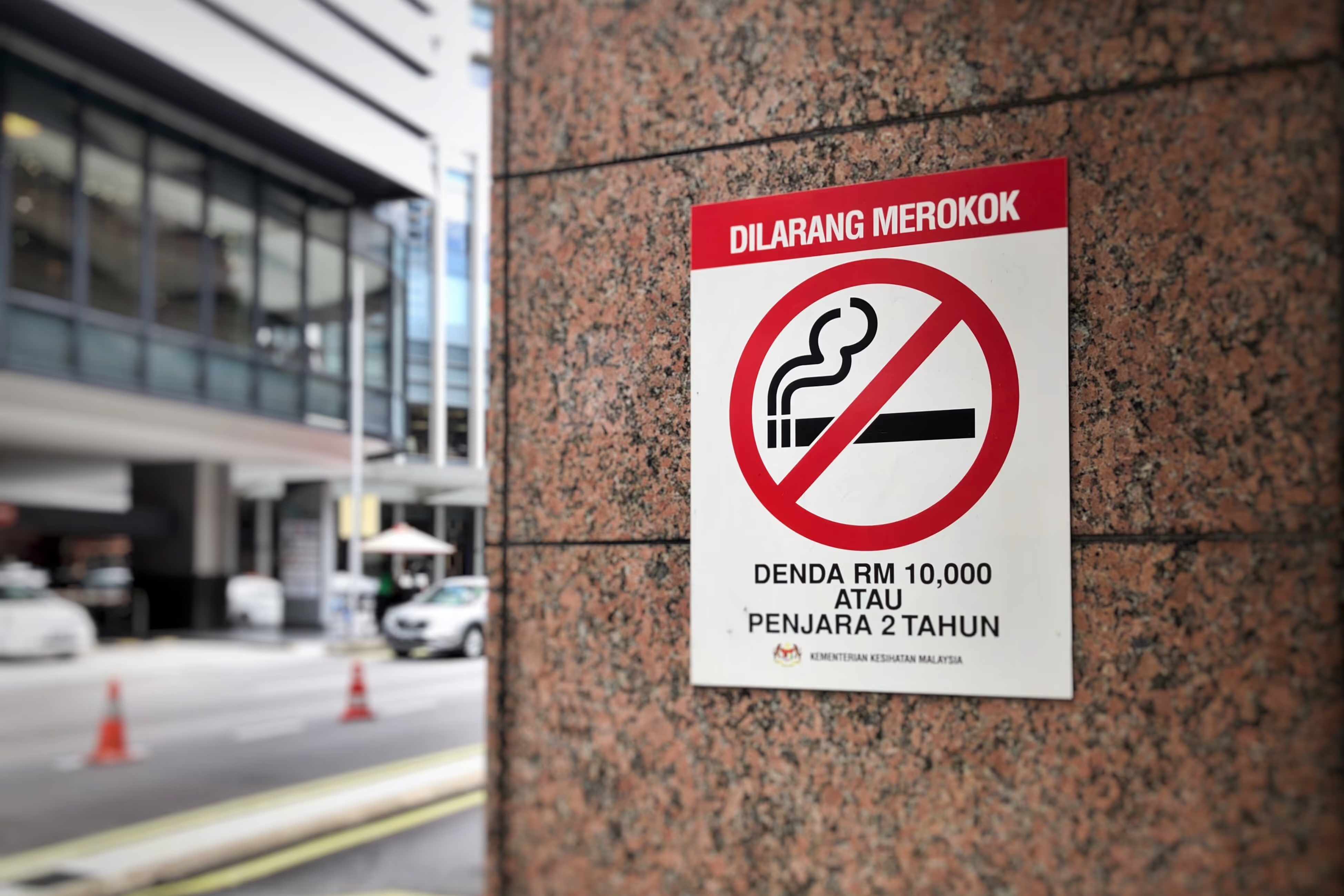
Introduction
Few would dispute that prolonged smoking is harmful to human health. Since the latter half of the 20th century, there has been overwhelming scientific evidence published establishing the link between tobacco consumption and various diseases, particularly cancers1. Considering the strength of the evidence available, the International Agency for Research on Cancer, a World Health Organization (WHO) institution, officially classified tobacco as carcinogenic to humans in 19862.
However, to this day, disagreements remain on whether the government should have a role in regulating behaviours such as smoking, or whether this space should remain as the individual’s personal choice in which the government should have limited reach. This article looks at this debate by examining the public health and economic rationale for tobacco control, Malaysia’s commitments and regulations relating to tobacco control, and concerns regarding government intervention in this area.
Public health rationale for tobacco control
More than ever, Malaysians are dying because of non-communicable diseases (NCDs). These diseases, such as heart disease and cancers, constitute the leading causes of medically-certified deaths in Malaysia3 (see Chart 1). Many of these NCDs are often associated with lifestyle choices including tobacco smoking, and as such, are considered to be preventable.

Tobacco smoking is a major risk factor for NCDs, with strong causal links to heart disease and lung cancer, among other diseases. In the case of lung cancer, more than 80% of cases have been found to be directly related to tobacco smoking4. Although smoking trends amongst Malaysians have been slowly decreasing5, the health burden resulting from this habit remains high. According to the Malaysian National Cancer Registry, lung cancer is now the second most common type of cancer affecting men, and fifth for women6. Since 2015, lung cancer has become one of the top five causes of medically-certified deaths in Malaysia. Deaths due to lung cancer increased from 1,122 for men in 2010 to 1,253 in 2016, and from 457 to 561 for women7. Many of these deaths could have been avoided by preventing smoking behaviour.
Considering the number of avoidable smoking-related deaths, from a purely public health perspective, there is arguably a strong justification for the government to intervene in the tobacco market.
The economics of tobacco control
In addition to the potential public health benefits of tobacco control, there are also economic justifications to strengthen the case for tobacco control, some of which are discussed below.
To begin with, two key market failures in the tobacco market have been identified that may warrant government intervention. One such failure is the presence of negative externalities, whereby non-smokers would have to bear the physical costs of smoking without necessarily enjoying the “benefits” (such as the perceived pleasure derived from nicotine intake). In 2015, 37.1% of Malaysian adults are reportedly exposed to second-hand smoke at home8.
Moreover, smoking also imposes costs to others financially, as the healthcare costs of treating tobacco-related diseases would have to be borne by taxpayers without differentiating between smokers and non-smokers. In Malaysia, a cost-analysis study has estimated that the total annual healthcare cost attributable to smoking was RM132.7m for lung cancer, RM544.5m for heart disease and RM2.2b for chronic obstructive pulmonary disease, amounting to RM2.9b annually9. To put this into context, Malaysia’s total health expenditure in the year for which the costs were calculated (2004) was RM19.1b10. This has implications on public finance because the burden of treating smokers would have to be borne by non-smokers as well, raising equity issues that are the consequences of a certain lifestyle choice. Furthermore, smokers suffering from tobacco-related diseases may be taking up precious medical resources such as hospital beds and doctors’ time, at the expense of other patients suffering from non-preventable conditions.
Asymmetry of information is another potential market failure, where smokers may not fully know the risks of tobacco consumption. The 2011 Global Adults Tobacco Survey revealed that only 88.1% of current Malaysian adult smokers believe smoking causes serious illness, compared to 93.5% of non-smokers. Just 53.2% of Malaysian adults surveyed believe that smoking causes stomach cancer. Only 79.8% of smokers believe that second-hand smoke causes serious illness to others11. Children and teenagers may be especially susceptible to persuasive marketing and are less informed in making long-term decisions on their health.
Governments may have the means to correct some of these market failures by imposing regulations on tobacco. For example, governments may implement taxation on tobacco products, which may serve to deter smoking habits; a Malaysian study has estimated that a 5.9% increase in cigarette prices would reduce consumption by 3.4%12. Additionally, taxing tobacco products can increase public revenue, which may be used to cover the increased healthcare costs incurred by smokers. Confining smoking to certain areas may limit exposure to second-hand smoke. Graphic health warnings and restrictions on advertising of tobacco products may counter the effects of the marketing tactics used by the tobacco industry.
However, tobacco control comes with costs too. Putting in place a monitoring and enforcement mechanism to ensure compliance is not cheap. Implementing a no-smoking campaign requires funding. There are also opportunity costs in the form of lost tax revenue from tobacco companies which can be used to finance other social and public goods. This is made worse if the intended health outcome is not achieved e.g. tobacco consumption does not decrease but takes place in the shadow economy. For example, the International Tax and Investment Centre in partnership with Oxford Economics has reported that Malaysia is one of the countries with the highest amounts of illicit cigarettes, making up an estimated 36.9% of total cigarettes consumed in 201513.
Additionally, some have scrutinised the claim that implementing smoking prevention measures would reduce healthcare costs. This is based on the notion that while preventing disease and premature deaths due to smoking may reduce the associated immediate medical costs, the savings made may be offset by the increased cost incurred by other unrelated diseases that may occur over the extended lifespan14. For example, an individual who smokes may develop lung cancer and die prematurely; although this would initially pose a financial burden on the healthcare system, the burden would be short-lived. On the other hand, a non-smoker will have greatly reduced risks of developing lung cancer but may subsequently experience ageing-related conditions which may pose greater financial healthcare burden over a longer period. As such, tobacco control measures may not actually avoid healthcare costs, instead only postpone, or even prolong these costs in the long term.
While some elements of the economic rationale for tobacco control may be questioned, there may still be strong grounds for government intervention, if only to protect people from death and disease. As Geoffrey Rose, a renowned public health expert, wrote in his book on preventive medicine, “It is better to be healthy than ill or dead. That is the beginning and the end of the only real argument for preventive medicine. It is sufficient15.” Thus, tobacco control may be justified not based on the possibility that it may be cost-saving, but rather, because it is life-saving.
Tobacco control regulations
Malaysia, together with 180 other countries, is party to the Framework Convention on Tobacco Control (FCTC), a legally-binding treaty negotiated at the WHO16. The treaty holds signatory governments accountable for developing and implementing evidence-based tobacco control measures to regulate the domestic supply and demand of tobacco, with a view of reducing tobacco-related deaths and disease. Examples of tobacco control measures outlined in the FCTC are presented in Table 1. Malaysia has implemented a number of these measures as part of its tobacco control efforts, as legislated in the Control for Tobacco Products Regulations 2004 (CTPR)17.
One significant tobacco control measure is implementing price and tax measures on tobacco products. For example, the 2009 Budget Speech proposed the increase of excise duty specific on cigarettes from 15 sen per stick to 18 sen per stick, increasing the duty for a 20-stick pack by 60 sen18. Most recently, in November 2015, the government announced a tax increase by around 40%, which pushed the price of some popular brands to RM18 per pack19. According to the WHO, as at July 2016, the total tax as a percentage of the retail price of Malaysia’s most-sold brand is 52.7%, which falls short of the FCTC recommended 70%20. In March 2017, the Deputy Health Minister Datuk Seri Dr Hilmi Yahya announced plans to further increase cigarette prices21.
The government has also implemented several non-price measures under the CTPR. These measures include the prohibition of tobacco product advertisements such as tobacco-promoting posters, pamphlets, and television commercials22. The CTPR also mandates that at least 55% of cigarette packaging intended for the Malaysian market must be covered by health warnings23. Additionally, the government has introduced smoke-free spaces, which effective from 1 February 2017, expanded to include public parks, playgrounds and campsites24. Datuk Seri Dr Hilmi has announced that the government is considering increasing the minimum age for purchasing cigarettes, as well as introducing cigarette plain packaging in Malaysia25.
Government paternalism: How much should governments intervene?
While Rose argues that it is always better to be healthy than ill or dead, some may disagree. While maintaining good health is arguably a priority for most people, it may not always be the only outcome considered when individuals choose how to live their lives. People may wish to engage in activities from which they expect to derive pleasure, satisfaction or fulfilment, not all of which may be conducive to good health26. Some people may decide that the perceived pleasure derived from smoking may be a greater priority for them than good health. Thus, paternalistic policies such as placing restrictions on smoking has been argued to interfere with consumer sovereignty, preventing individuals from deciding what is best for themselves, supposedly for their own good.
Critics of such policies note that government paternalism may potentially infantilise citizens, demotivate them, and breach their autonomy. For example, Julian Le Grand and Bill New, wrote that “By legitimising a paternalistic government, are we actually creating a potentially tyrannical state, justifying its intervention in every aspect of our lives?27”
The debate regarding the role of government in regulating lifestyle and behavioural choices remains ever pervasive and important. For example, the emergence of new products like e-cigarettes and vaporisers (more commonly known as vapes) has divided public health experts, policymakers and members of the public everywhere. While some question whether these devices should be regulated by governments like existing tobacco products, others question whether they should be regulated at all. Box 1 below further discusses e-cigarettes.
It’s a matter of personal choice—or is it?
Discussions regarding the role of government in regulating individual choices sometimes refer to John Stuart Mill’s discourse On Liberty in which he wrote, “The only purpose for which power can be rightfully exercised over any member of a civilised community, against this will, is to prevent harm to others. His own good, either physical or moral, is not a sufficient warrant28.” In the case of tobacco smoking, an individual’s choice to smoke may have harmful effects on others through the negative externalities described earlier, and as such, it no longer is just about the individual’s personal choice.
Furthermore, while the decision to start smoking may have been a choice, for many smokers, continuing to smoke may not be. Unlike substances such as alcohol and marijuana, nicotine, the primary active chemical in tobacco, is highly addictive29. Most smokers quickly develop a physical dependency on nicotine, and psychological addiction to the act of smoking itself. As such, some may argue that tobacco addiction is a medical disease or disorder that requires professional treatment and support30. In 2015, 52.3% of current smokers surveyed in Malaysia had attempted to quit in the past twelve months31.
Box 1: E-cigarettes—where there’s (no) smoke…
While the rate of tobacco smoking in Malaysia has been slowly decreasing in recent years, the rate of uptake of e-cigarettes and vapes has been increasing rapidly. According to the 2015 National Health and Morbidity Survey, between 2011 and 2015, the prevalence of e-cigarette smoking among Malaysian adults increased from 0.7% to 10.9%32. The rising trend of vaping has been observed in other parts of the world as well, including in the UK and the US33. One of the most commonly reported reasons for e-cigarette use is that these new devices may be a less harmful alternative to smoking regular cigarettes. Another frequently cited reason for using e-cigarettes is to quit or reduce smoking34.
However, there is no strong consensus among the scientific community on whether vapes are indeed healthier alternatives to traditional cigarettes. The UK’s Public Health England (PHE) has concluded that based on the latest evidence, “e-cigarettes are around 95% safer than smoked tobacco and they can help smokers to quit35.” This finding is largely predicated on the notion that most smoking-related diseases are linked to the smoke produced by the combustion of tobacco, not to the nicotine which smokers crave. Since e-cigarettes can deliver nicotine without involving the combustion of tobacco, they have been argued to be safer than regular cigarettes. As such, proponents of e-cigarettes put forward that vaping can offer a low-risk substitute to cigarette smoking, especially for the smokers for whom other nicotine replacement devices such as nicotine patches do not help.
On the other hand, several American health organisations seem to be much less optimistic about e-cigarettes. For example, the American Medical Association, the American College of Physicians and the American Public Health Association do not recommend e-cigarettes for quitting tobacco, expressing concerns of poor quality of evidence for their effectiveness as cessation tools36. Additionally, some argue that although e-cigarettes may be less harmful than regular cigarettes, they are nonetheless still harmful. As one tobacco expert at the University of California, San Francisco puts it, “To say that [e-cigarettes are] less harmful is like saying it’s better to jump out of the 40th floor than the 100th floor of a building37.”
Furthermore, there are concerns that the rising popularity of e-cigarettes may tempt those who do not smoke to take up the habit, particularly adolescents. These concerns may be valid, considering that 10% of Malaysian adolescents who are dual users of regular cigarettes and e-cigarettes began by vaping before moving to tobacco smoking38.
A recent WHO publication conceded that e-cigarettes may act as a lower risk substitute to traditional tobacco cigarettes, although the degree of harm reduction is uncertain39. However, it was also noted that “Governments that are considering policies to restrict vaping should consider the optimal regulation of e-cigarette products40.” Others have similarly suggested that government regulations must strike a balance between e-cigarettes’ potential to help current tobacco quit while avoiding unintentionally providing a route for smoking for current non-smokers41.
Considerations for the future
With many governments imposing increasingly stricter regulations on tobacco, some have questioned where the line should be drawn for government intervention in lifestyle choices. If tobacco is controlled due to its damaging effects on health, should alcohol also face similar levels of restrictions? As countries such as the UK are moving towards imposing taxes on sugary soft drinks, is a total sugar ban the next step? What about salt rationing, or government-mandated daily exercise hours? Questions regarding government intervention may extend beyond public health issues, such as whether governments should have a role in compelling citizens to save for old age.
The answer to these questions and others like them may differ by societies depending on the values held by the collective members of those societies. As such, it may be up to each society to decide whether they consider there to be sufficient justification for government intervention.
Should a society find that there is a need for government intervention for certain lifestyle choices, further considerations must also be given on the form that the intervention should take. One option is to limit interventions to carrying out campaigns to raise awareness and educate in the hopes that given all the available information, individuals will make the “right” choices—whatever this may be. A more extensive option would be to restrict or outright ban all unhealthy behaviours, while healthy behaviours be legally mandated or possibly rewarded. Alternatively, governments may consider adopting the nudging approach, sometimes thought of as a softer paternalism, implementing policies that subtly guide the population in directions that can improve their lives, without explicitly eliminating their freedom to choose. Which option will Malaysia pick?
NOTES
[1] Doll and Bradford-Hill (1950), IARC (1986) and Proctor (2011)
[2] The IARC classifies tobacco smoking, smokeless tobacco and second-hand tobacco smoking as carcinogenic. Source: IARC (2015)
[3] For further discussions into the leading causes of death in Malaysia, readers may refer to KRI’s publication: “Death in Malaysia—What Are the Statistics Telling Us?”
[4] US Department of Health and Human Services (2014)
[5] World Health Organization (2015)
[6] National Cancer Institute (2016)
[7] Department of Statistics (2016) and Department of Statistics (2017). Note: the difference in number of deaths by gender may perhaps be a reflection of the higher smoking prevalence for men (43.0%) compared to women (1.4%). Source: Institute for Public Health (2015)
[8] Institute for Public Health (2015)
[9] Syed Muhamed Al-Junid (2007)
[10] Ministry of Health (2017)
[11] Institute for Public Health (2012)
[12] Ross and Al-Sadat (2007)
[13] ITIC, Oxford Economics (2016). It may be worth noting that ITIC and OE were engaged by Philip Morris International Management SA, the tobacco behemoth, in producing this report.
[14] Barendregt et al (1997)
[15] Rose (2008)
[16] World Health Organization (2017a)
[17] Ministry of Health (2004)
[18] Ministry of Finance (2008)
[19] New Straits Times (2015)
[20] World Health Organization (2017b)
[21] The Star (2017)
[22] Ministry of Health (2004)
[23] World Health Organization (2017b)
[24] New Straits Times (2017)
[25] Source: The Star (2017). Note: for further discussions regarding plain packaging and tobacco control, readers may refer to KRI’s publication “Why Trade Matters: Trade Issues in Non-Communicable Diseases, Essential Medicines and Education”
[26] Sassi and Hurst (2008)
[27] Le Grand and New (2015)
[28] Mill (1859)
[29] Proctor (2013)
[30] Batra, A. (2009)
[31] Institute for Public Health (2015)
[32] Ibid
[33] Dockrell et al (2013) and Pearson et al (2012)
[34] Institute for Public Health (2016), Peters et al (2015) and Berg et al (2014)
[35] Public Health England (2015)
[36] American Medical Association (2015), American College of Physicians (2015) and American Public Health Association (2014)
[37] Beck (2014)
[38] Institute for Public Health (2016)
[39] World Health Organization (2017c)
[40] Ibid
[41] Public Health England (2015)















